#Italo-byzantine
Explore tagged Tumblr posts
Text
Italo-byzantine Crucifixion Fresco
Date: 10th century
This was a gift to Saint Monk Ivan Rilski and the Rila Monastery possibly from Orso_II_Participazio(18th Doge of Venice)

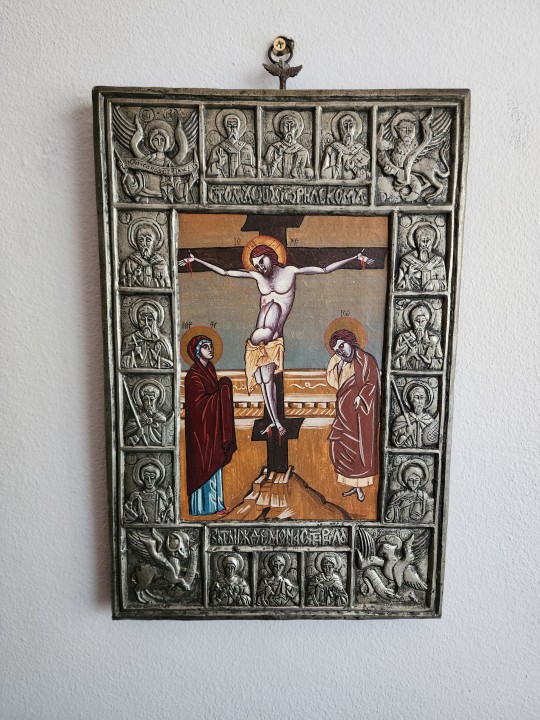
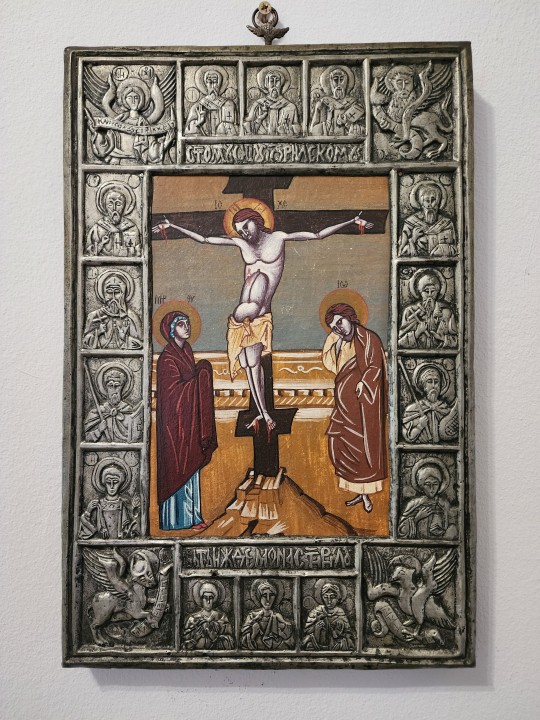
#art#italo-byzantine#medieval#10th century#museum#christie scheele#christie sigworth#christies#christie stevens#16th century#sotheby
1 note
·
View note
Text
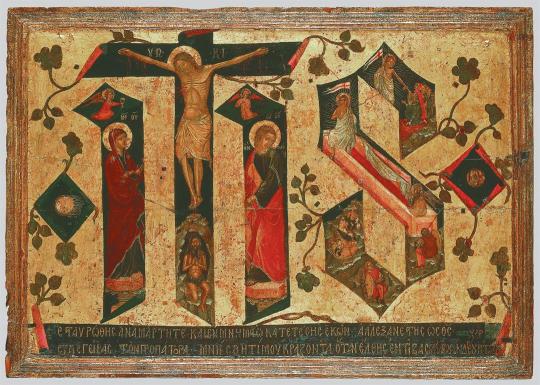
Jesus Savior of Humankind, attributed to the Cretan artist Andreas Ritzos (1421-92). The painting depicts the Crucifixion, Resurrection, and Harrowing of Hell within the letters I(ESUS) H(OMINUM) S(ALVATOR). Egg tempera on wood; 44.5 cm high x 63.5 cm wide. Now in the Byzantine and Christian Museum, Athens.
#art#art history#Andreas Ritzos#religious art#Christian art#Christianity#Catholicism#Byzantine Christianity#Cretan art#Italo-Cretan art#15th century art#egg tempera on wood#Byzantine and Christian Museum Athens
290 notes
·
View notes
Text
unfortunately i know Michael Psellos actually exists because he's essentially the one token original Byzantine philosopher between John of Damascus and Gemistos Plethon who you don't have to squint at and say "weeeeeeeeeell, what exactly *is* a philosopher anyway?" beforehand.
time to Gregory Berrycone my OC into history
#would i call bullshit on you though? probably not#okay also there is john italos but is he really byzantine? etc
66 notes
·
View notes
Text
Why do people specify Roman Catholic?
Many people - even amongst Roman Catholics ourselves - may not be aware of this, but the Catholic church is actually made up of 24 sui iuris (autonomous) churches, all in communion with the Bishop of Rome. The dominant church is, clearly, the Latin or Roman Church, which makes up the vast majority of Catholics: the Eastern churches number only 18 million of the 1.3 billion Catholics in total.
The next largest is the Syro-Malabar church, centred in the Indian state of Kerala, and descending from a native church present in the region since around the 8th century. The next largest is the Ukrainian church.
The defining feature of these churches is that they use a different Rite than that of the Roman church: West and East Syriac, Armenian, Alexandrian, Byzantine.
The other main feature is a national one:
Under the Byzantine Rite, the most diverse, you have 14 churches: Albanian, Belarusian, Bulgarian, Croatian and Serbian, Greek, Hungarian, Italo-Albanian, Macedonian, Melkite, Romanian, Russian, Ruthenian, Slovak, and Ukrainian.
Under the Alexandrian rite, there are 3: Coptic, Ethiopian, and Eritrean.
Under the West Syriac rite, there are 3: Maronite, Syriac, Syro-Malankara.
Under the East Syriac rite, there are 2: Chaldean and Syro-Malabar.
Under the Latin rite, there is one: Roman (there are some other rites within the Roman church, such as the Ambrosian rite practiced in Milan).
Under the Armenian rite, there is one: Armenian.
All of these churches, though autonomous to a degree, are fully and entirely Catholic, fully united with the Roman Catholic Church.
Some are much older than others: the Maronite church, for example, has been extant since some time in the mid first millennium; while the Eritrean church was only formed in 2015.
152 notes
·
View notes
Text

Day 82: Italo-Byzantine architecture | Daily Venice for you!
#Venezia#Venice#Italia#Italy#art#Architecture#history#Travel Photography#water#bridge#river#photo#sky#old city#cityscpae#squares#murano#Burano#urban travel#photography#tarvel#Tourism#spring#summer#Europe#venetian carnival#travel#nature#landscape#city
45 notes
·
View notes
Text
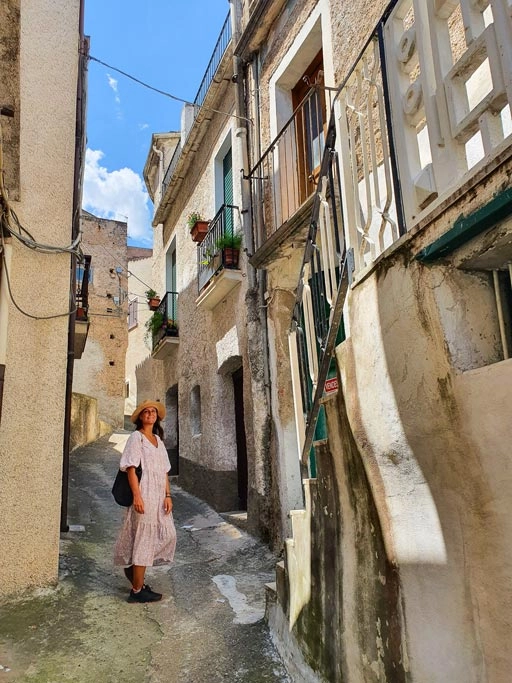
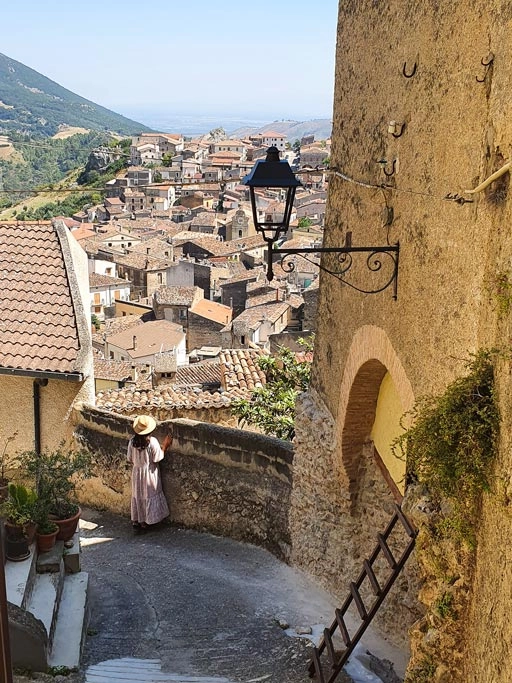


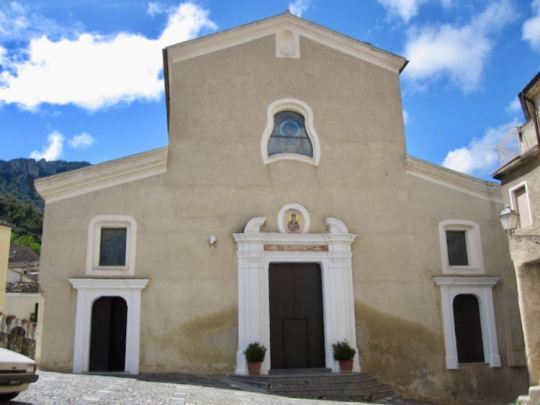
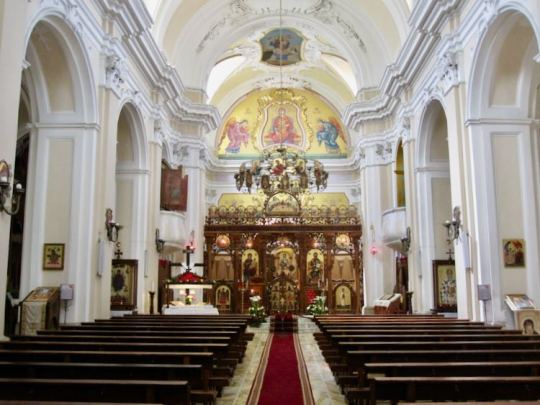


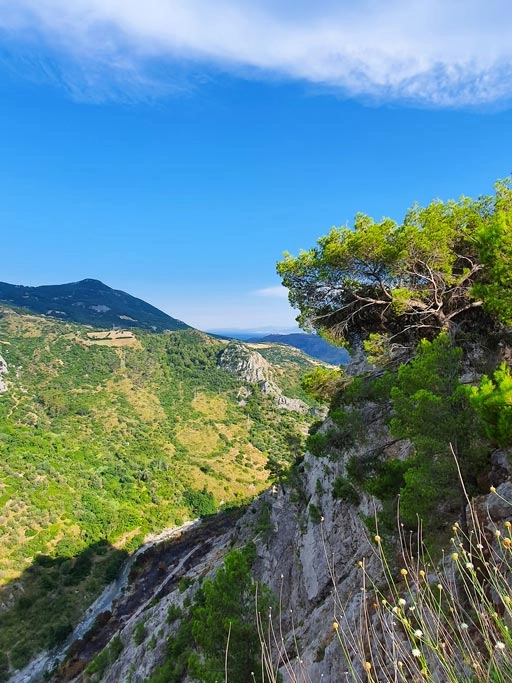
Civita, Calabria, Italy
Civita is hilltown town in Calabria in the heart of the Pollino National park, in Southern Italy's Calabria.
In Civita, Calabria, the history centers on an Albanian community fleeing from the Turks. While a precise arrival date is not known, the first Albanian explorers most likely came to the area in the 1470s. The “new” arrivals brought their language and culture with them, settling throughout the Pollino Mountains.
In keeping with Civita’s history, the local religion and village architecture reflect Arbëreshe culture. Just off the main piazza stands the Italian-Albanian Mother Church dedicated to Santa Maria Assunta. Its parishioners follow the Byzantine rite as part of the Eparchy of Lungro, an Italo-Albanian diocese in Calabria, subject to the Holy See. The Baroque structure features many elements of the Byzantine church, such as the beautiful iconostasis in walnut and olivewood, numerous icons and frescos.
Civita maintains its original layout, with neighborhoods of old two-story stone houses with large fireplaces situated along narrow lanes. Interestingly, the facades of several homes resemble faces, with a long chimney for the nose and windows for eyes.
The chimney stacks are another characteristic of the village, each unique design giving that personal touch to the habitation.
This village of fewer than 1,000 also boasts the dramatic natural setting of northern Calabria’s Pollino Mountains, part of Italy’s largest national park. One of Civita’s highlights is the Gole del Raganello, a deep canyon carved by the Raganello River, which flows to the Ionian Sea. From Civita’s enviable position of 450 meters (1,480 feet), views of the expansive river valley extend all the way to the sea!
From the oldtown, you can hike down the side of the canyon or take a jeep to the Ponte del Diavolo. This Devil’s Bridge has the familiar tale of having been constructed by the devil in exchange for the life of the first soul who crosses it. Being cleverer than the diavolo himself, the local landowner who made the pact with the devil tricked him by sending a sheep, instead of a person, over the new structure.
Photos by Un Trolley per Due and Calabria: The Other Italy
Follow us on Instagram, @calabria_mediterranea
#civita#calabria#italy#italia#south italy#southern italy#mediterranean#italian#europe#landscape#italian landscape#italian girls#italian girl#girl#girls#mountains#mountain#mountainscape#village#villages#italian landscapes#nature#nature photography#Arbëresh#albanian#chimney
23 notes
·
View notes
Note
Hello, could you tell us about Kalymnos and the history of weaving in Greece?
Hi! They are both broad topics, however I will do my best to summarize the most important and interesting information about them.
KALYMNOS
Kálymnos is an island which belongs in the Dodecanese, the southeasternmost islands of Greece. It is 26th in the list of the 50 largest Greek islands. It is the third most populous island of the Dodecanese.
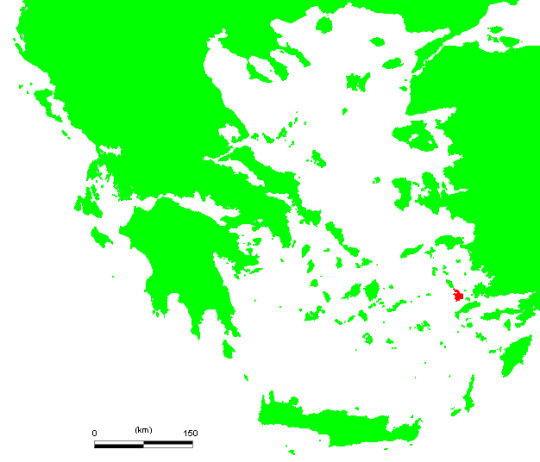
Kalymnos was first inhabited by Carians and Phoenicians. By 1100 BC the island was inhabited by Dorian Greeks. Kalymnos participated in the Trojan War and Homer mentions it with the name Kalydnae. In the late Archaic period, Kalymnos was a democracy. For a time, it was captured by the Persians. When liberated again, Kalymnos remained an ally of Athens, however it did not meddle much with the Peloponnesian war. Like all the other regions of Greece, it fell under Roman rule and was a part of the Byzantine Empire in the middle ages. In the 13th and 14th centuries it came under the control of Venice and the Order of Knights of the Hospital of Saint John of Jerusalem (Ιωαννίτες Ιππότες - Ioannites Ippotes in Greek) AKA the crusaders, just like most of the Dodecanese islands. The knights expanded and reinforced the original Byzantine fortress of the island which was there since the 10th century.
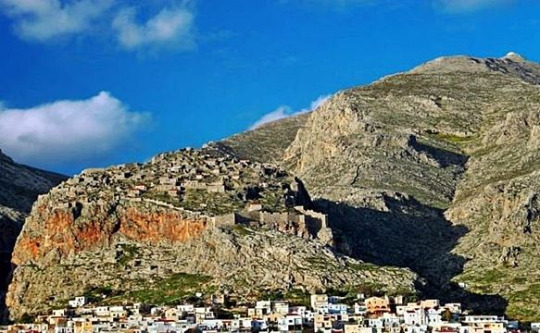
The ruins of the castle above the main town (Chora) of the island.
The Ottoman Turks attacked the island for about 80 years until they conquered it in 1522. Kalymnos was relatively privileged in the Ottoman Empire - islands were always more privileged compared to mainland Greek regions. In 1881, the Ottoman General Census found that the island had an overwhelming Greek majority (9,482 Greeks out of 9,716 overall population). In 1912, Italy conquered the island during the Italo-Turkish war and kept it until 1947, when, in the form of reparations after the Axis Occupation, Italy ceded the Dodecanese islands to Greece. The Dodecanese were the last region to get united with the Modern Greek state.
Kalymnos has a diverse, arid landscape. It is hilly and very rugged, while its coastline is very indented, forming numerous cliffs, caves and coves. This is why Kalymnos is an internationally popular rock climbing destination with more than 3,000 climbing routes. Kalymnos also has a small archipelagos of its own.
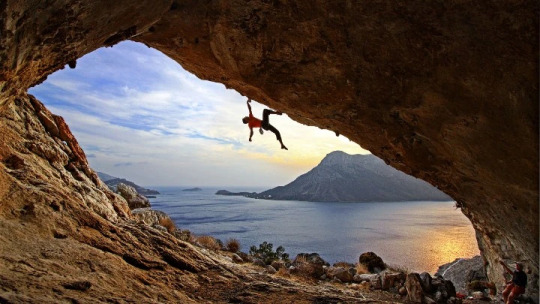
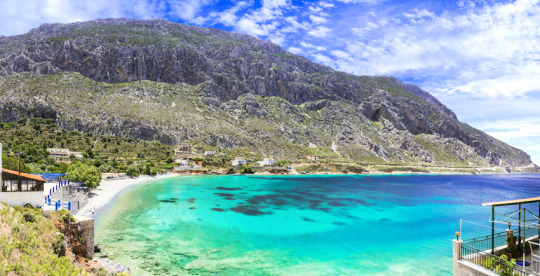
Kalymnos' economy is not based on agriculture, but rather tourism, traditional head scarf painting production and, most notably, sponge diving, which is the best known tradition of the island. Greece is the biggest exporter of natural sponges in the world, largely thanks to Kalymnian spongedivers and the island's seabed. Traditional sponge diving is extremely dangerous and potentially fatal and involves wearing a very heavy suit and holding your breath underwater for extended periods of time.
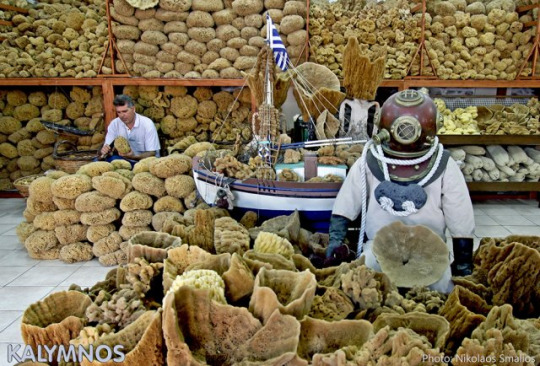

Artwork depicting the life of a Kalymnian spongediver © Francesco Zizola / NOOR
A folk song sang by Kalymnian sailors and divers has become popular around the world after French singer Dalida made a cover of it with romantic lyrics in 1970. The actual song however was sung by the ship's crew and it was meant to rouse a reaction from the spongediver so that if he struggled underwater, he would have the will to fight and manage to come to the water's surface. For example, the song makes references to the little joys of life, food, a comfortable sleep in a warm bed, sex, making a family, it mentions women (who could be real islanders the spongedivers were interested in), it mentions taking the City back (AKA Constantinople!), it mentions turning against the privileged lords of the island, it "threatens" the spongediver with unfairness ("you lads, I will give violets to you all, I will give two to each, but hey I am giving none to Yoryis (the spongediver)!"), it criticizes the spongediver's unresponsiveness (not pulling the rope) and implies his sister is with the crew, so anything that could potentially make a young man's blood flow and rouse a reaction from him and help him rise to the surface. I link the song below, performed by an actual crew from the island.
youtube
After the 60s a lot of Kalymnians emigrated to the USA and Australia, where they were usually employed in hard jobs, like constructing and painting bridges, used as they were in the demanding job of their island.

WEAVING IN GREECE
Weaving is a big, broad topic, especially because it was a well attested practice in Greece even in the Homeric Age. Therefore, and because the post is already long, I found some links that are very helpful and detailed and way more informative than whatever I would write here!
In this link here, there is a pdf about Byzantine weaving and textiles.
#greece#europe#facts#places#travel#islands#history#greek history#greek facts#kalymnos#sponges#climbing#rock climbing#weaving#arts and crafts#tradition#greek culture#anon#ask
32 notes
·
View notes
Text
Linguistic Map of Europe, 600 AD.

This interesting linguistic map of Europe around 600 AD illustrates the diverse and complex tapestry of languages and dialects spoken across the continent during this period.
The map highlights the extensive reach of Slavic languages in Eastern Europe, while the Western and Southern regions are dominated by Romance languages, including West Romance and Italo-Dalmatian, which evolved from Latin.
Old Norse and Anglo-Saxon occupy the northern territories, reflecting the early stages of Germanic language distribution.
In the Mediterranean and parts of North Africa, Koine Greek, Coptic and African Romance are prevalent, showcasing the influence of the Roman and Byzantine Empires.
The map also depicts the significant presence of Uralic languages such as Saami and North Finnic in the northernmost parts of Europe, and the Oghur and Common Turkic languages in the Eurasian steppes.
This linguistic diversity is a testament to the various migrations, conquests and cultural exchanges that shaped early medieval Europe.
#Linguistic Map#Europe#medieval europe#languages#dialects#slavic#romance#latin#germanic#koine greek#coptic#african romance#uralic
5 notes
·
View notes
Text

Art History Through AI:
“Christ Meets Black Jesus”
"Black Jesus, my foot. That's Ned the Wino" – Thelma Evans (Good Times)
Artistic depictions of Christ in pre-Renaissance art reveal a trans-formative journey from symbolic representation to dynamic narrative scenes. Significant examples include Giotto di Bondone's works, which marked a departure from the Italo-Byzantine style by introducing more humanistic qualities to his subjects, emphasizing emotional depth and realism. Additionally, the Nativity scenes, such as those by Duccio, showcase Christ's birth with a focus on the Virgin Mary's experience, often depicted with idealized beauty and maternal grace. Common characteristics of these artworks include the use of halos, typically rendered in gold leaf, surrounding the heads of Christ and saints, serving as divine markers of holiness. Furthermore, the shift from the beardless, youthful representations of early Christian art to the bearded, authoritative images seen in later works, reflects evolving theological perspectives and cultural influences, establishing a recognizable iconography that endures to this day. These elements together illustrate the narrative intricacies and devotional functions of Christ's depictions in this artistic epoch.
The portrayal of Christ in pre-renaissance European art underwent significant theological changes influenced by evolving understandings of his humanity and divinity. In late medieval and Renaissance Italy, there was a pronounced emphasis on the humanity of Christ, leading to representations that centered on his earthly experiences, particularly his birth and death, which reflect key aspects of Christian doctrine such as the Incarnation and resurrection. This perspective contrasted earlier traditions, which often depicted the miraculous elements of Christ's life, such as his miracles and teachings, showcasing a shift towards a more relatable and human representation of the Savior. Additionally, the official practices of the Western Church, starting from Pope Gregory the Great's time, valued images as both instructional and devotional tools, driving demand for scenes from Christ's life in various artistic forms. Ultimately, these theological developments not only enriched the iconography of Christ’s narrative but also encouraged artistic creativity within the constraints of traditional Church dictates, forming a unique blend of innovation and reverence in pre-renaissance European art. With cultural norms and spiritual needs ever changing, the artistic depictions of Christ can be controversial.
The modern debate surrounding the depiction of Jesus as a fair-skinned figure is deeply intertwined with historical and cultural contexts, raising issues of representation and identity. Critics argue that the portrayal of Jesus predominantly as white reinforces harmful narratives of white supremacy and undermines the historical reality of his Middle Eastern heritage, which is likely to have included a darker complexion. This discourse is reflected in various cultural mediums, including the Season One episode of the television show "Good Times," titled "Black Jesus," where J.J. Evans’ painting of a Black Jesus, which J.J. used the character of Ned the Wino as inspiration, serves as a symbol of hope and faith for his family amid struggles. The episode illustrates the significance of diverse representations of Jesus as a means of affirming the value and experiences of marginalized communities. This ongoing discussion highlights the need for more inclusive and accurate portrayals of Christ, urging a departure from traditional depictions that may not align with historical contexts or the experiences of diverse populations.
Artists utilizing generative AI to create images can draw inspiration from pre-Renaissance characteristics found in European depictions of Christ by focusing on stylistic elements such as abstraction, symbolism, and religious motifs. To effectively prompt AI tools, artists might incorporate keywords like "iconography," emphasizing the use of symbols in religious contexts, as well as "flatness" to suggest a two-dimensional rather than realistic portrayal. Additionally, terms like "golden halo" and "sacred geometry" can evoke the transcendental aspects prevalent in early Christian art. By using phrases like "spiritual representation" and "divine light," artists can guide the generative process to reflect these historical influences, ensuring that their outputs resonate with the spiritual and artistic themes of the pre-Renaissance period while leveraging modern technology.
0 notes
Text
Events 8.5 (before 1860)
AD 25 – Guangwu claims the throne as Emperor of China, restoring the Han dynasty after the collapse of the short-lived Xin dynasty. 70 – Fires resulting from the destruction of the Second Temple in Jerusalem are extinguished. 642 – Battle of Maserfield: Penda of Mercia defeats and kills Oswald of Northumbria. 910 – The last major Danish army to raid England for nearly a century is defeated at the Battle of Tettenhall by the allied forces of Mercia and Wessex, led by King Edward the Elder and Æthelred, Lord of the Mercians. 939 – The Battle of Alhandic is fought between Ramiro II of León and Abd-ar-Rahman III at Zamora in the context of the Spanish Reconquista. The battle resulted in a victory for the Emirate of Córdoba. 1068 – Byzantine–Norman wars: Italo-Normans begin a nearly-three-year siege of Bari. 1100 – Henry I is crowned King of England in Westminster Abbey. 1278 – Spanish Reconquista: the forces of the Kingdom of Castile initiate the ultimately futile Siege of Algeciras against the Emirate of Granada. 1305 – First Scottish War of Independence: Sir John Stewart of Menteith, the pro-English Sheriff of Dumbarton, successfully manages to capture Sir William Wallace of Scotland, leading to Wallace's subsequent execution by hanging, evisceration, drawing and quartering, and beheading 18 days later. 1388 – The Battle of Otterburn, a border skirmish between the Scottish and the English in Northern England, is fought near Otterburn. 1460 – The Kingdom of Scotland captures Roxburgh, one of the last English strongholds in Scotland, following a siege. 1506 – The Grand Duchy of Lithuania defeats the Crimean Khanate in the Battle of Kletsk. 1583 – Sir Humphrey Gilbert establishes the first English colony in North America, at what is now St. John's, Newfoundland and Labrador. 1600 – The Gowrie Conspiracy against King James VI of Scotland (later to become King James I of England) takes place. 1620 – The Mayflower departs from Southampton, England, carrying would-be settlers, on its first attempt to reach North America; it is forced to dock in Dartmouth when its companion ship, the Speedwell, springs a leak. 1689 – Beaver Wars: Fifteen hundred Iroquois attack Lachine in New France. 1716 – Austro-Turkish War (1716–1718): One-fifth of a Turkish army and the Grand Vizier are killed in the Battle of Petrovaradin. 1735 – Freedom of the press: New York Weekly Journal writer John Peter Zenger is acquitted of seditious libel against the royal governor of New York, on the basis that what he had published was true. 1772 – First Partition of Poland: The representatives of Austria, Prussia, and Russia sign three bilateral conventions condemning the ‘anarchy’ of the Polish-Lithuanian Commonwealth and imputing to the three powers ‘ancient and legitimate rights’ to the territories of the Commonwealth. The conventions allow each of the three great powers to annex a part of the Commonwealth, which they proceed to do over the course of the following two months. 1763 – Pontiac's War: Battle of Bushy Run: British forces led by Henry Bouquet defeat Chief Pontiac's Indians at Bushy Run. 1781 – The Battle of Dogger Bank takes place. 1796 – The Battle of Castiglione in Napoleon's first Italian campaigns of the French Revolutionary Wars. 1816 – The British Admiralty dismisses Francis Ronalds's new invention of the first working electric telegraph as "wholly unnecessary", preferring to continue using the semaphore. 1824 – Greek War of Independence: Konstantinos Kanaris leads a Greek fleet to victory against Ottoman and Egyptian naval forces in the Battle of Samos. 1858 – Cyrus West Field and others complete the first transatlantic telegraph cable after several unsuccessful attempts. It will operate for less than a month.
0 notes
Text

a bit from Last Judgment mosaic at the Baptistery of Florence Cathedral. Mosaic on the vault (Detail of the Hell Scene).
by Coppo di Marcovaldo | a Florentine painter in the Italo-Byzantine style, active in the middle of the thirteenth century, whose fusion of both the Italian and Byzantine styles had great influence on generations of Italian artists.
1 note
·
View note
Text

SAINTS NOVEMBER 11
Bl. Kamen Vitchev, Byzantine-Slavonic Rite Roman Catholic priest. Arrested by the Communists, falsely charged with heading a “Catholic conspiracy” against the government. On November 11, 1952, he was executed by gunfire. Feastday: November 11
St. Cynfran, 5th century. A Welsh saint, founder, and confessor. He was the son of a local Welsh king. Cynfran founded a church in Gwynedd, and a local well was named for him.
St. Rhediw. Welsh saint. He is known principally because of the church dedicated to him in Gwynedd, Wales.
ST. BARTHOLOMEW, ABBOT OF GROTTAFERRATA was an Italo-Greek abbot at the monastery at Grottaferrata. Nov 11
St. Martin of Tours, Known as the “Apostle of Gaul,” Saint Martin of Tours began life as a soldier, and went on to become a Bishop. He is known especially for his devotion to the poor, as seen in an incident from his early life, when Saint Martin cut his cloak in half and gave part to a poor man suffering from the cold. He was Roman Catholic Bishop of Tours, whose shrine in France became a famous stopping-point for pilgrims on the road to Santiago de Compostela in Spain. Feastday: November 11 https://www.vaticannews.va/en/saints/11/11/st--martin--bishop-of-tours-.html
0 notes
Text
On this day in Wikipedia: Tuesday, 26th September
Welcome, Bienvenue, Benvenuta, שלום 🤗 What does @Wikipedia say about 26th September through the years 🏛️📜🗓️?

26th September 2019 🗓️ : Death - Jacques Chirac Jacques Chirac, French politician, President of France (b. 1932) "Jacques René Chirac (UK: , US: , French: [ʒak ʁəne ʃiʁak] ; 29 November 1932 – 26 September 2019) was a French politician who served as President of France from 1995 to 2007. Chirac was previously Prime Minister of France from 1974 to 1976 and from 1986 to 1988, as well as Mayor of Paris from 1977..."

Image licensed under CC BY 4.0? by Christian Lambiotte
26th September 2016 🗓️ : Death - Toughie (frog) Toughie, last known Rabbs' fringe-limbed treefrog (h. fl. 2005) "Toughie was the last known living Rabbs' fringe-limbed treefrog. The species, scientifically known as Ecnomiohyla rabborum, is thought to be extinct, as the last specimen—Toughie—died in captivity on September 26, 2016. ..."

Image licensed under CC BY 2.0? by Brian Gratwicke from DC, USA
26th September 2013 🗓️ : Death - Mario Montez Mario Montez, Puerto Rican-American actor (b. 1935) "René Rivera, (July 20, 1935 – September 26, 2013), known professionally as Mario Montez, was one of the Warhol superstars, appearing in thirteen of Andy Warhol's underground films from 1964 to 1966. He took his name as a male homage to the actress Maria Montez, an important gay icon in the 1950s and..."

Image licensed under CC BY-SA 3.0? by Michael Bidner
26th September 1973 🗓️ : Event - Concorde Concorde makes its first non-stop crossing of the Atlantic in record-breaking time. "The Aérospatiale/BAC Concorde () is a retired Franco-British supersonic airliner jointly developed and manufactured by Sud Aviation (later Aérospatiale) and the British Aircraft Corporation (BAC). Studies started in 1954, and France and the UK signed a treaty establishing the development project on..."

Image licensed under CC BY-SA 3.0? by Eduard Marmet
26th September 1923 🗓️ : Event - Occupation of the Ruhr The German government accepts the occupation of the Ruhr. "The Occupation of the Ruhr (German: Ruhrbesetzung) was a period of military occupation of the Ruhr region of Germany by France and Belgium between 11 January 1923 and 25 August 1925. France and Belgium occupied the heavily industrialized Ruhr Valley in response to Germany defaulting on reparation..."
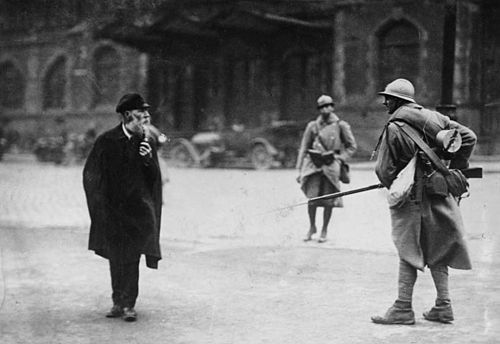
Image licensed under CC BY-SA 3.0 de? by
UnknownUnknown
26th September 1820 🗓️ : Birth - Ishwar Chandra Vidyasagar Ishwar Chandra Vidyasagar, Indian philosopher, painter, and academic (d. 1891) "Ishwar Chandra Bandopadhyay CIE, popularly known as Ishwar Chandra Vidya Sagar (Bengali: ঈশ্বরচন্দ্র বিদ্যাসাগর, lit. 'Vidyasagar, the Sea of Knowledge)'; (26 September 1820 – 29 July 1891), was an Indian educator and social reformer of the nineteenth century. His efforts to simplify and modernise..."
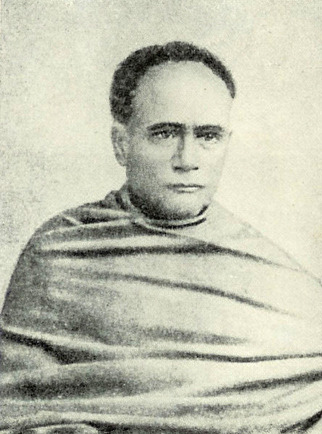
Image by Unknown authorUnknown author
26th September 🗓️ : Holiday - Christian feast days: Nilus the Younger "Nilus the Younger, also called Neilos of Rossano (Italian: Nilo di Rossano, Greek: Όσιος Νείλος, ο εκ Καλαβρίας; 910 – 27 December 1005) was a Griko monk and abbot from Calabria. He was the founder of Italo-Byzantine monasticism in southern Italy. He is venerated as a saint in the Eastern Orthodox..."
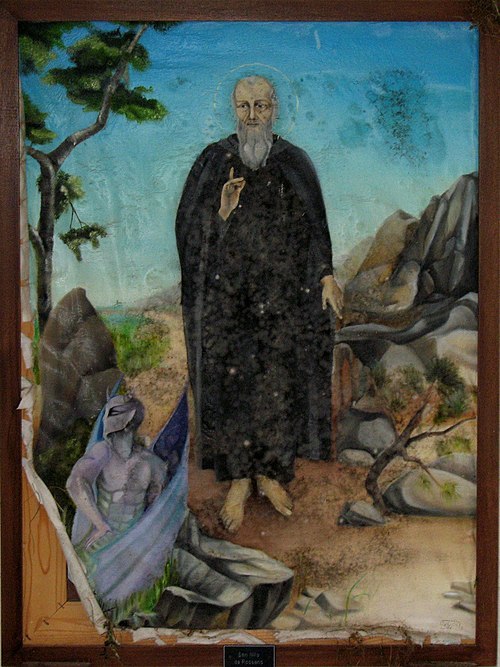
Image by GJo
0 notes
Text

The Patriarchal Cathedral Basilica of Saint Mark, commonly known as St Mark's Basilica, is the cathedral church of the Roman Catholic Archdiocese of Venice, northern Italy. It is the most famous of the city's churches and one of the best known examples of Italo-Byzantine architecture…
Please follow link for full post
Art,Paintings,Canals,Gondola,Mark,biography,History,Venice,fine art Venice,Zaidan,Italy,BASILICA,Artists,footnotes,Saint,
01 Painting of the Canals of Venice, Rubens Santoro's Venetian Canal, with Saint Mark's Basilica in the Distance, with footnotes #116
https://venicecanals.blogspot.com/2020/02/01-painting-of-canals-of-venice-by.html
0 notes
Text

@maja-cherub it absolutely fucking is. The audacity. The fucking gall to include what are obviously Baroque paintings in a question about “Renaissance paintings”, alongside a fucking Italo-Byzantine style icon of Christ and what look to be the Apostles? “Renaissance” my ass.
You know that studying art history has rewired your brain when seeing Johannes Vermeer's Girl with a Pearl Earring described as a "Renaissance painting" makes you see red.
32 notes
·
View notes
Photo
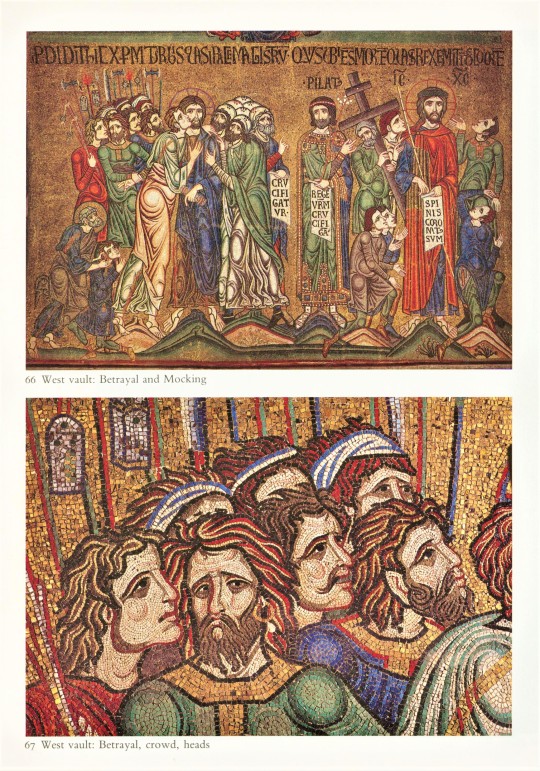
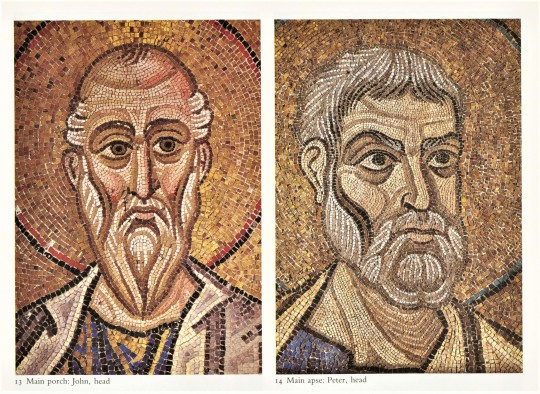

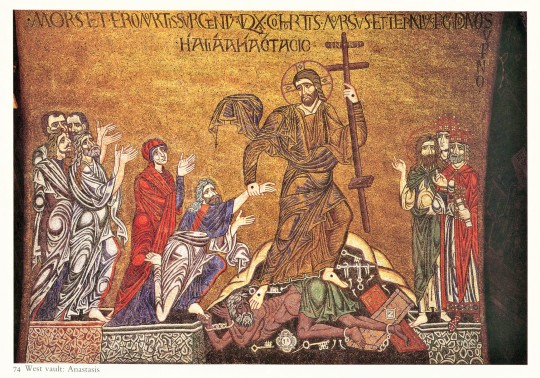
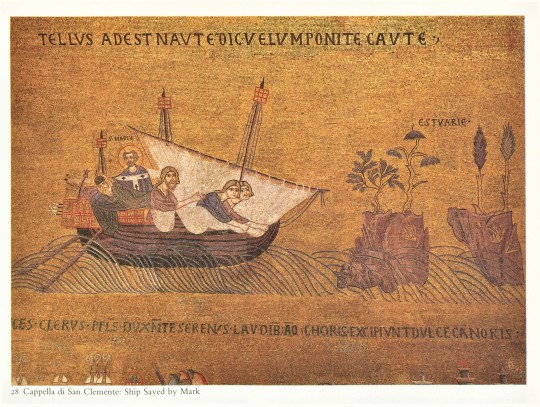
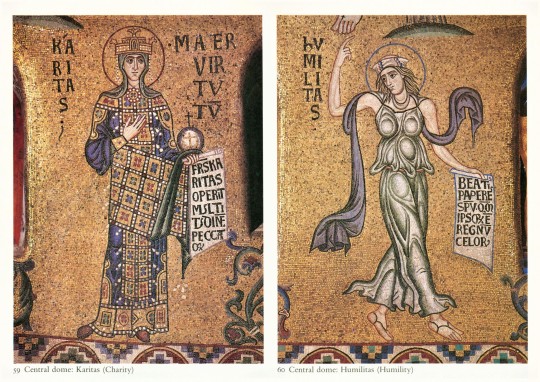

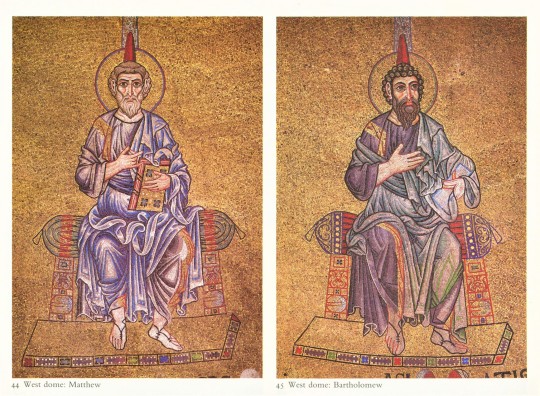
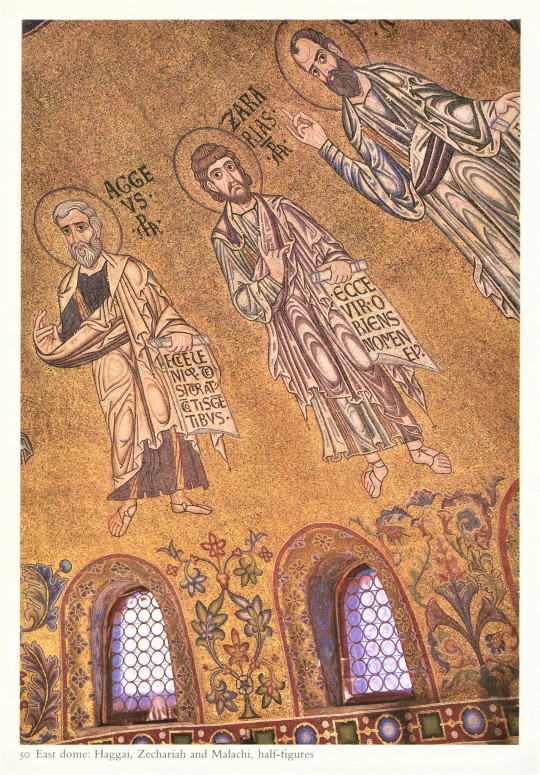
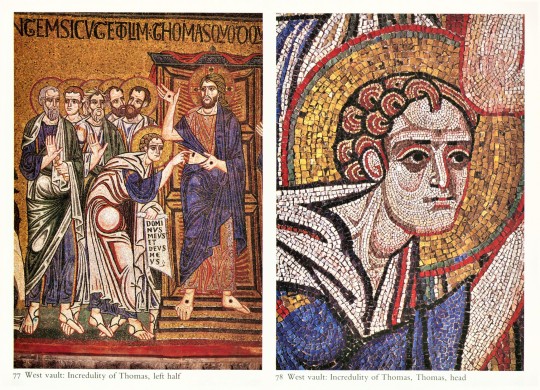
Decorative Sunday
Published in 1984 in a two volume, four part set (with part 2 of each volume containing plates) by the University of Chicago Press for Dumbarton Oaks, The Mosaics of San Marco in Venice documents the career-culminating project of Byzantine art historian, Otto Demus. The plates presented here are from the first volume, which comprises mosaics from the eleventh and twelfth centuries; the second volume deals with those from the thirteenth century.
Demus first published on Basilica di San Marco early in his career: Die Mosaiken von San Marco in Venedig, 1100-1300 (Baden bei Wien: R. M. Rohrer Verlag, 1935). That text was an abridged version of Demus’s 1927 doctoral thesis. Early in his career, Demus noted a neglect of scholarship on San Marco despite being the one of the most expansive extant examples of medieval mosaic work. In his introduction to The Mosaics of San Marco, he attributes this oversight to “the fact that medieval Venice constitutes a kind of art-historical no-man’s-land, belonging neither to Byzantium nor to the West.”
Between 1949 and 1980, Demus was also a regular visiting scholar at the Dumbarton Oaks research library. In 1973, Demus secured funding from Dumbarton Oaks to fully document and clean the San Marco mosaics in preparation for this publication. The scholar, by then in his seventies, was an enthusiastic participant in the project, scaling the scaffolding each day over the five year duration of the project.
View more Decorative Sunday posts here.
-Olivia, Special Collections Graduate Intern
#Decorative Sunday#decorative arts#decorative plates#The Mosaics of San Marco in Venice#Otto Demus#St. Mark's Basilica#Basilica di San Marco#Venice#Byzantine#Italo-byzantine#Art History#Dumbarton Oaks#University of Chicago Press#Olivia
40 notes
·
View notes